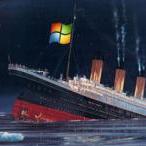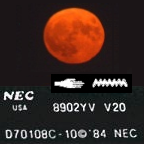Leaderboard
Popular Content
Showing content with the highest reputation on 08/01/2018 in Posts
-
Better late than never, but here (I believe) is the answer: The default user agent string normally isn't stored in the prefs; instead, it's built on-the-fly. However, you can create a string pref "general.useragent.override" which can contain whatever user agent string you want; e.g., "Mozilla/5.0 (Windows NT 6.1; WOW64; rv:52.9) Gecko/20100101 Firefox/52.9" will make it look like you're running Firefox 52.9 on Windows 7. Moreover, if pref "general.useragent.site_specific_overrides" is "true" (the default), you can create string prefs of the format "general.useragent.override.www.mysite.com" which can contain a special user agent string only for www.mysite.com.2 points
-
The above link works with Basilisk, so probably New Moon 28 as well. Just click on the .xpi file then tell your browser it's OK to download....2 points
-
@heinoganda Look here. It seems that we will see the re-released editions of July .NET updates at August 14.2 points
-
Hmmm. I would call the video largely incomplete and inconsistent (not entirely unlike the MS crappy Windows 10 it talks about) The video can be summed up in three points: 1) there are evident inconsistencies in the UI design 2) it is undeniable that these inconsistencies exist and that the good MS guys didn't care about them 3) it is unfair to say that they are not capable of making the UI - if not visually agreeable - at least consistent, but simply they prioritized other things over the UI design The missing point is WHAT (the heck ) are the other things that: a. kept the good MS guys so busy to make a mess of the very thing that was sold to us as being innovative (the UI) b. are so good (and innovative) that allow them to be excused for the lousy work they did on the UI jaclaz1 point
-
1 point
-
When using certutil.exe, the WinINIT entries are also deleted. Whether that has an impact on the error Event ID 11 I can not verify unfortunately because this error has not occurred with me. The fact is, if the content in the "CryptnetUrlCache" folders is deleted, this content also no longer exists with certutil.exe. Then there is still on the support side of MS even more "CryptnetUrlCache" folder where the contents should be deleted manually. Remember that the specified folder structure refers to more modern Windows variants. You should first have to see if the error after deleting the contents in the "CryptnetUrlCache" folders still exists.1 point
-
Oof... listing 328 Microsoft KB pages seems counterproductive, considering you need to suply your email address for them to mail you the link to the hotfix. The whole point of this was to host the hotfixes all together for easy access. Makes me wonder if my update repository for 8.0 and Vista updates is considered "legal"1 point
-
Thank you for fixing it for older OSes (especially Vista)! Added to the list. You can link to its Sourceforge page now. The author accepted my modifications and the program is now at version 2.1.5.1.1 point
-
I report an error with the latest MS update of .NET Framework 2 (ndp20sp2-kb4338615 xxx). An Application from 2015 will not run if this update is installed. I must uninstall the update. The reason (error displayed by the app) was a ActiveX that couldn't registered at runtime...1 point
-
Your dedication and hard work are much appreciated WinClient5270! AntiVirus & Security Software: Avast has given advance notice of their intention to end support: https://forum.avast.com/index.php?topic=220639.0 Two more brands that ended support last year are F-Secure (https://community.f-secure.com/t5/F-Secure-SAFE/End-of-Windows-Vista-support-for/ta-p/92278) and Immunet (http://support.immunet.com/topic/3311-new-release-immunet-600602604606/). As @Ruan once pointed out (in a post that was lost to the server crash of early June), certain Server 2008 patches are incompatible with Sandboxie (https://forums.sandboxie.com/phpBB3/viewtopic.php?t=25590). Microsoft Security Essentials 4.4.304.0 predates the EOL "time bomb" and still works on Vista according to @Jody Thornton, but would have to be downloaded from a third party such as FileHippo.1 point
-
New build of Firfox 45ESR SSE: test binary: https://o.rthost.cf/gpc/files1.rt/firefox-45.9.10-20180728-1a7ee7094-win32-sse.7z repo: https://github.com/roytam1/mozilla45esr Changes since my last build: - import changes from tenfourfox: - #463: rework idle callbacks to use max timeout; try to fix stalls; pref off by default for FPR9 (12cdb0cd2) - #516: idle time to 10s; add more adblock hosts (dc12741be) (1a7ee7094)1 point
-
1. Open Chrome and type: chrome://flags/#windows10-custom-titlebar 2. "Custom-drawn Windows 10 Titlebar": choose "Disabled" 3. Restart Chrome and glass is back1 point
-
The timeline appears correct. It was around this time that Sony had been putting wireless built into their VAIO notebooks (and unfortunately RAID1 on their VAIO desktops).. but those were not rosy times. In fact it had major problems back then and my own experiences with wifi made me sit on that technology until draft-N products were being sold at retail. Remember those early days of wireless, before smart phones but a large majority of households had cordless phones... that ran on the same or similar frequencies (including microwaves) as the wireless devices in VAIO notebooks, meaning you could not access the internet while you were on the phone or cooking a snack!1 point
-
Sure they are opinions , but there is another little thing, called experience (amount of and dating since ). Not at all to attempt to endorse my opinions indirectly by boasting my (unfortunately) old age, but it seems to me clear enough that besides different opinions, we had different experiences with computers in different periods, and probably also at a different scale/with a different final scope. What was the first NT family OS you actually worked (not played) on? [1] How many machines did you have migrated from NT 4.0 Workstation to Windows 2000 (and/or from NT 4.0 Server to 2000 Server) and maintained in year 2000-2001? [2] How many machines did you have migrated from 98 or 2000 to XP and maintained in 2002-2003 ? [3] How many servers did you have migrated from 2000 Server to 2003 Server and maintained in 2003-2004 ? [4] Please understand how my involvement with the PC's and their OSes comes only partially by my personal interest in this field, the main part has always been connected with using them as tools to make some professional work. To attempt to bring you back in the right timeframe - Wi-Fi began to be largely used only after 2003 (i.e. 802.11g) as the earlier versions (802.11 and 802.11b) were way too costly and slow to have any practical utility, this is a Wired article about that time: https://www.wired.com/2003/05/wifirevolution/ At the time the good MS guys were (obviously) all-in on XP and Windows 2000 was already considered "dead". If you go back in time and look for actual hardware pre-2003, you will soon find that: 1) there were NO phones or tablets (at all) 2) there were very few laptops/portables with Wi-Fi card embedded/included Same goes for USB, Windows 2000 was actually released BEFORE USB 2.0 was even approved. jaclaz Answers in my case: [1] NT 3.1 [2] 40-60 [3] 40-60 [4] 31 point
-
In my experience, WinXP was slower than Win2000. And please do not cite "prefetcher", it makes ANY operating system slower in my experience, so I always disable it. Most important, WinXP was MUCH, MUCH more buggy than Win2000. In Win2000 I haven't spotted a single bug, in WinXP I could name some 15-20 that I faced. Most of the bugs were visual glitches, sometimes related to the theme engine though. The most annoying bug for me was that the start button would go pushed only after the menu apeared, and not when clicked. Another annoying bug was that the language panel would make the taskbar thick in Classic theme, so I would always take the internat.exe files from Win2000 and replace the layout indicator with it. It would reside in system tray. I also disliked the artwork of WinXP, including the icon theme and how some visuals intended for Luna would still be pushed in Classic theme (such as the aforementioned language panel which was sized for Luna taskbar). The logon window in Classic theme would have weird window metrics and colors imitating Luna. Console window would somtimes disrespect theme settings. And so on and so on... I admit, WinXP had some very useful functions compared to Win2000, such as system restore, ability to arrange icons on the desktop by a grid (this was possible on Win2000 via third-party software), Wi-Fi management, ClearType. But overall WinXP had much worse quality and visual consistency. It also was slower.1 point
-
1 point
-
1.5.9 is in and not subject to the slowdowns seen in the development version (not surprisingly because the development version isn't optimized). Looks good so far. THANK YOU. Big Muscle, may I suggest you provide a development version that's optimized, though still logs. I have three configs in products I build: Debug - unoptimized, with full instrumentation. Beta - optimized, but with a lot of instrumentation. Release - optimized and without debugging instrumentation. It's just an idea. I wasn't really able to test your pre-release code much, beyond seeing that it actually worked, because the slowdowns made my Win 10 setup too sluggish to use. I'm very happy the optimized version is still snappy as ever. -Noel1 point
-
The issue - as often happens - is the lack of memory (not RAM, actual historical memory). When XP came out it did not offer to the user *anything* more than Windows 2000 (in practice) exception made for bells and whistles, and - as a matter of fact - until SP1 (or SP1a) arrived it was not even fully suitable for professional use. The enhancements (compared to Windows 2000) under the hood were not appreciated initially (in the business/enterprise), essentially because of the need for much more powerful machines, the requirement on disk was almost tripled ( from 650 MB to over 1500 MB) and the requirement for RAM was almost doubled (to actually work on the machines, 128 MB of RAM was more than reasonable for 2000, but you had to have 256 MB for XP). On the home side, just as it will later happen for Vista, the new OS was proposed by OEM's on seriously underpowered machines and home users (who had never even seen 2000 and all had 95 and 98) had new, shining, machines that were much slower than their counterparts and introduced a lot of little nuisances in common use (such as user management) no more "real" DOS, etc. Of course a very little amount of programs, for several years, took advantage of the "enhancements" introduced in Windows XP Also remember how untiil at very least late 2003, all the servers were (and remained) Windows 2000, so for three years or more until Server 2003 came into use, most enterprise "backbones" were using 2000 technology. And if I had 25 cents for each time a user asked me to get back Kodak Imaging (from 2000) instead of the new "fax viewer" and 50 cents for all the machines where I installed the files (coming from NT4) to fix the issues with "Simple File Sharing" : ftp://www.bf.lu.lv/pub/Service_Pack/WinXP/droshiiba/Security_Tab.html on corporate networks I wouldn't be rich, but surely much more well off. The basic issue was the "paradigm shift" of unifying (with XP) a "same" OS both for professionals and home users, managing obviously to make both categories somehow unhappy. You want an example of the non-enhancements in XP? Take the FAT32 drivers on USB: https://msfn.org/board/topic/125116-fat16-vs-fat32-vs-ntfs-speed-on-usb-stick/ Now, if you compare (on relatively modern hardware) an updated XP (SP 2 or later) against a (necessarily outdated) Windows 2000 (SP4) you can find quite a few improvements in XP when compared to Windows 2000 SP4, but it would be not a "fair" comparison. jaclaz1 point
-
The off-line windows 32-bit installer (file jre-8u181-windows-i586.exe) continues to function properly on this old Vista SP2 32-bit laptop; I suppose this is of no consolation to XP users of this thread, just reporting it as a FYI here; the GUI during installation (which itself took quite long, ca. 5min on this old, under-resourced, machine) was slightly redesigned to be of a more elongated rectangular shape; but it did include a link to the following Oracle article: Release Notice a message the XP users are unlikely to see, due to the installer being broken on that OS Regards1 point
-
In one word, NO. It is simply Windows 2000 with some bells and whistles added on. jaclaz1 point







